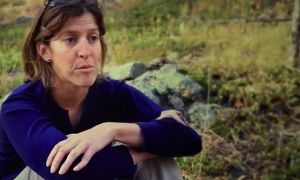Explore the Critical Zone: WSKG video
Grades 6 -
12
All Disciplines
Video
Educational Objectives
- Explain what the Critical Zone and Critical Zone Science are.
- Describe some ways humans are changing the Critical Zone and why these changes are important to understand.
Audience
K-12
General Public
Observatory: National CZO
Author(s): R. Ross (PRI), N. Coddington (WSKG), S. Johnson (WSKG), A. Moore (PRI), L. Derry (Cornell Univ), T. White (Penn State), J. Richardson (Cornell Univ), K. Singha (CSM), S. Brantley (Penn State)
Details for this Resource
WSKG Public Media
Published on Mar 9, 2017
The Critical Zone supports terrestrial life on Earth. It is the region above and below the Earth surface, extending from the tops of the trees down through the subsurface to the bottom of the groundwater.
Critical Zone scientists work to discover how this living skin is structured, evolves, and provides essential functions that sustain life.
The national Critical Zone Observatory Network is made up of nine environmental observatories each located in a different climatic and geologic setting. CZO scientists observe and measure a set of common parameters at each site. Building a common set of measurements across a diverse range of environmental conditions allows scientists to examine the underlying factors responsible for ecosystem growth and resilience.
Through interdisciplinary investigation, CZ scientists help us understand the essential functions that sustain life on Earth.
This project is in partnership with the Paleontological Research Institution.
Links:
National Critical Zone Observatories: /national/
Paleontological Research Institution: https://www.priweb.org/
NSF: https://www.nsf.gov/
Credits:
Kamini Singha - Boulder Creek Critical Zone Observatory and Colorado School of Mines
Timothy White - Critical Zone National Office Coordinator, Penn State University
Louis Derry - Director Critical Zone National Office, Cornell University
Justin Richardson - Critical Zone National Office Post-Doctoral Fellow, Cornell University
Susan Brantley - Susquehanna Shale Hills Critical Zone Observatory, Penn State University
Alexandra Moore - Critical Zone National Office Education & Outreach Consultant, Paleontological Research Institution
Rob Ross - Project Advisor, Critical Zone National Office Education & Outreach, Paleontological Research Institution
Nancy Coddington - Executive Producer, Narrator, WSKG Director of Science Content
Shane Johnson - Assistant Producer WSKG
Additional footage provided by: Ryan Vachon, UC MERCED, Calhoun Critical Zone Observatory, Southern Sierra Critical Zone Observatory, Boulder Creek Critical Zone Observatory, PEXELSVideos, Pond5, Pixabay, Mário J.R., Stockfootageforfree.com, Videvo.net, Videezy.com, and Phil Fried on vimeo.com
This material is based upon work supported by the National Science Foundation under Grant No. 1360760. Any opinions, findings, and conclusions or recommendations expressed in this material are those of the author(s) and do not necessarily reflect the views of the National Science Foundation.
Explore Further








